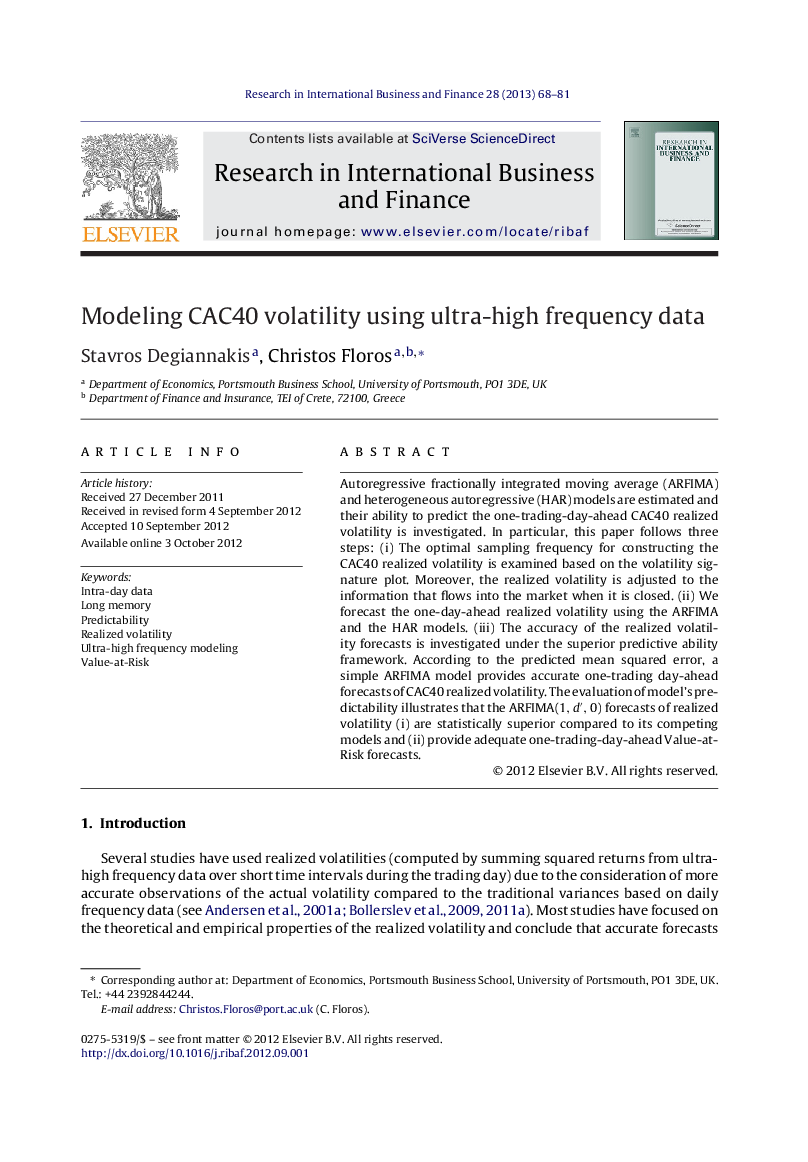| Article ID | Journal | Published Year | Pages | File Type |
|---|---|---|---|---|
| 1002290 | Research in International Business and Finance | 2013 | 14 Pages |
Autoregressive fractionally integrated moving average (ARFIMA) and heterogeneous autoregressive (HAR) models are estimated and their ability to predict the one-trading-day-ahead CAC40 realized volatility is investigated. In particular, this paper follows three steps: (i) The optimal sampling frequency for constructing the CAC40 realized volatility is examined based on the volatility signature plot. Moreover, the realized volatility is adjusted to the information that flows into the market when it is closed. (ii) We forecast the one-day-ahead realized volatility using the ARFIMA and the HAR models. (iii) The accuracy of the realized volatility forecasts is investigated under the superior predictive ability framework. According to the predicted mean squared error, a simple ARFIMA model provides accurate one-trading day-ahead forecasts of CAC40 realized volatility. The evaluation of model's predictability illustrates that the ARFIMA(1,d′,01,d′,0) forecasts of realized volatility (i) are statistically superior compared to its competing models and (ii) provide adequate one-trading-day-ahead Value-at-Risk forecasts.
Graphical abstractFigure optionsDownload full-size imageDownload as PowerPoint slideHighlights► We forecast the CAC40 realized volatility using the ARFIMA and the HAR models. ► A simple ARFIMA model provides accurate CAC40 realized volatility forecasts. ► The ARFIMA(1,d′,01,d′,0) is superior to its competitors in terms of forecasting accuracy. ► CAC40 optimal sampling frequency is 7 min, for June 2000 to October 2009. ► The superior model forecasts the one-trading-day ahead VaR accurately.
